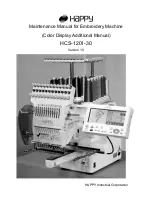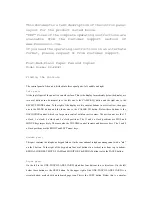
18
NARROW HEMMING
The narrow hem foot actually rolls the fabric edge to create
a narrow hem for napkins, ruffles, scarves, and dainty hem
finishes on clothing.
Fold a 1/8” double hem to the wrong side of fabric, for
about 2” along the beginning of the hem [Fig. 1]. Place the
rolled edge of the hem under the presser foot. Lower the
foot and take several stitches. Stop with the needle in the
fabric [Fig. 2]. Raise the foot. Pick up the fabric edge and
roll it into the scroll of the foot. Lower the foot and begin
stitching slowly. Hold the fabric up and slightly to the left as
you sew [Fig. 3]. Practice makes perfect with this technique!
OVEREDGING LIGHT TO MEDIUM WEIGHT FABRICS
The zigzag stitch is handy for overedging facings, hems,
and seam allowances to minimize raveling.
Position the fabric under the presser foot so the right
swing of the stitch forms just inside the edge of the fabric
[Fig. 4]. Test the position by turning the handwheel
toward you and manually "walking" the needle before
you begin sewing. Sew, guiding the fabric evenly.
BARTACKING
This stitch is excellent for reinforcing pocket corners and
belt loops. Because the feed teeth are lowered, there is
no need to make stitch length adjustments.
Determine the location for the bar tack and position the
fabric under the needle.
Sew 4-6 stitches [Fig. 5].
Raise the needle to its highest position. Turn the stitch
width dial to 0 and sew 3-4 stitches to secure the stitch.
BUILT-IN STITCHES – “N” NORMAL RANGE
STITCH “A” - STRAIGHT STITCH
Fig. 1
Fig. 3
Narrow hem
Fig. 4
Overedging
Fig. 5
STITCH “A” - ZIGZAG
RANGE
STITCH
WIDTH
LENGTH
FOOT
N
A
0
3
Hemmer
RANGE
STITCH
WIDTH
LENGTH
FOOT
N
A
3-5
2
Overcast
Fig. 2
Bartack
RANGE
STITCH
WIDTH
DROP FEED
FOOT
N
A
4-5
Lowered
All-purpose
















































